Dominating the views of the Old City of Jerusalem is the gold ‘Dome of the Rock.’ It is positioned in the middle of a large area usually refered to as the Temple Mount but for Muslims its known as Haram esh-Sharif / the Noble Sanctuary. The Al Aqsa mosque is also situated on the Temple Mount and it is considered the third most holy place in the world for Muslims (after Mecca and Medina).
For ca. 3000 years the Temple Mount has been the most sacred place for Jews as it was the site of the Jewish Temple. (For more about the history of the Temple Mount including its considerable expansion under Herod, see my Jewish Jerusalem post). But since 1967 Jewish law has forbidden Jews to enter this area. As it’s not known where exactly on the Temple Mount the Holy of Holies was (accesible only to the High Priests), any Jew walking through the site risks inadvertently treading on the ground of the Holy of Holies. The area is open to tourists at certain times in the morning although they can’t go inside the mosque or the Dome of the Rock – unless they are Muslims.
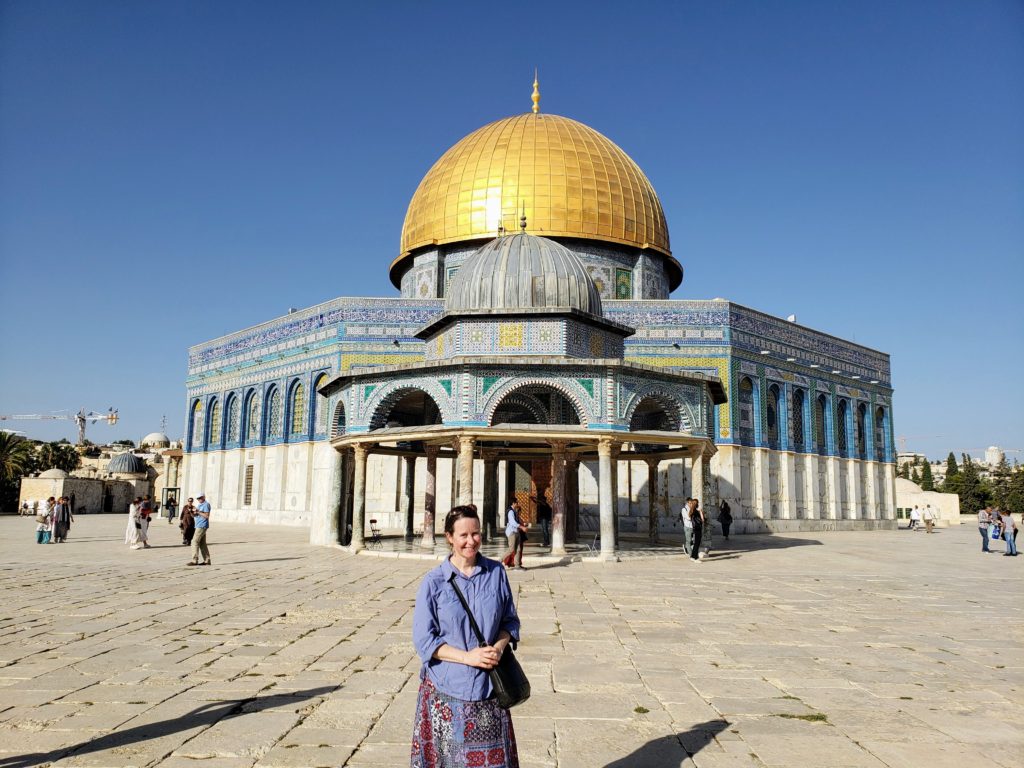
The only entrance for non-Muslims to the Temple Mount area is through a gate and bridge beside the Western Wall. Once we got through the entrance I was struck with how spacious it was. And while there were plenty of tourists and groups there, the area was so big it wasn’t crowded at all. This is an amazing contrast to all the rest of the Old City with its narrow streets, crowds and hustle and bustle. Here’s Antony just a few metres from the entrance. In the (southwest) corner you can see the Al Fakhriyya Minaret, constructed in 1345 by Fakhar al Din – a coptic Christian who converted to Islam.
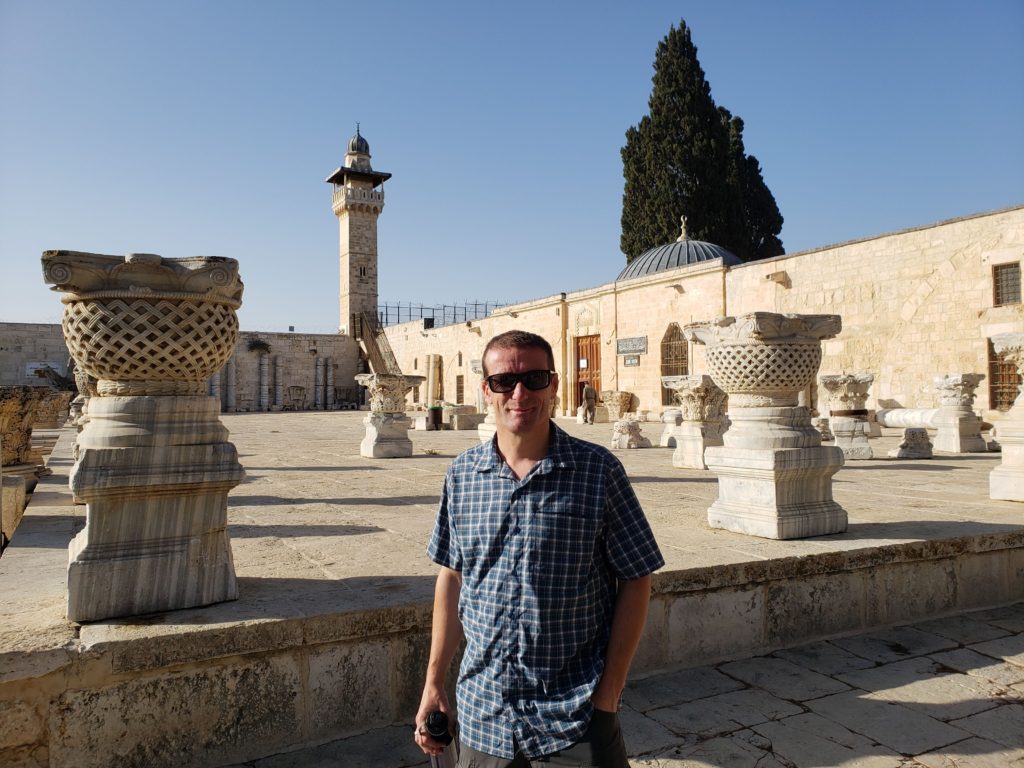
The Temple Mount covers 1/6 of the Old City – 150,000 square metres. You get a sense of its scale from this picture from the Mount of Olives. You can see the Dome of the Rock, the trees and the open space with the Temple Mount wall all around it.
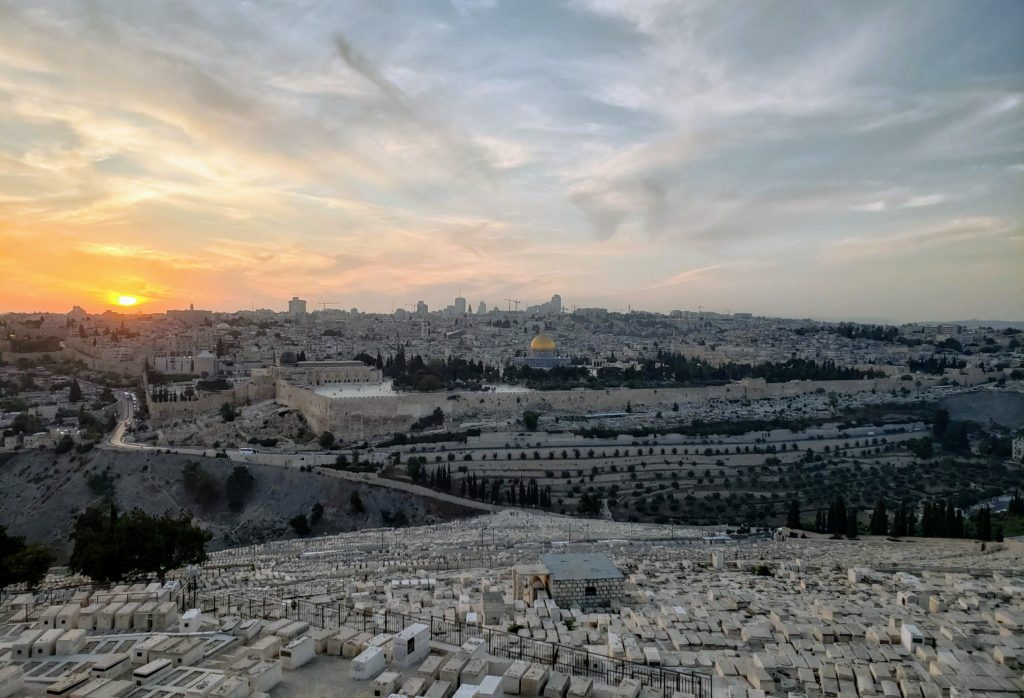
Before getting close to the Dome of the Rock we decide to check out the Southern perimeter of the area (Left side of Temple Mount in above photo). It’s here that the Al Aqsa mosque is located. We couldn’t go inside but had a look through a window – it was big. The reason this site is so holy to Muslims is that they believe Mohammed was transported here from Mecca in his ‘night journey’ which also encompassed an ascent to heaven from Jerusalem. Tradition considers this the second ever built Islamic place of worship. When it was originally built it was a much smaller prayer chapel which then got destroyed thanks to a couple of earthquakes then rebuilt in a bigger form. When the Crusaders captured the city they used it as a palace. It is understood Mohammed led prayers towards this site until God directed him to face the Kaaba in Mecca instead.
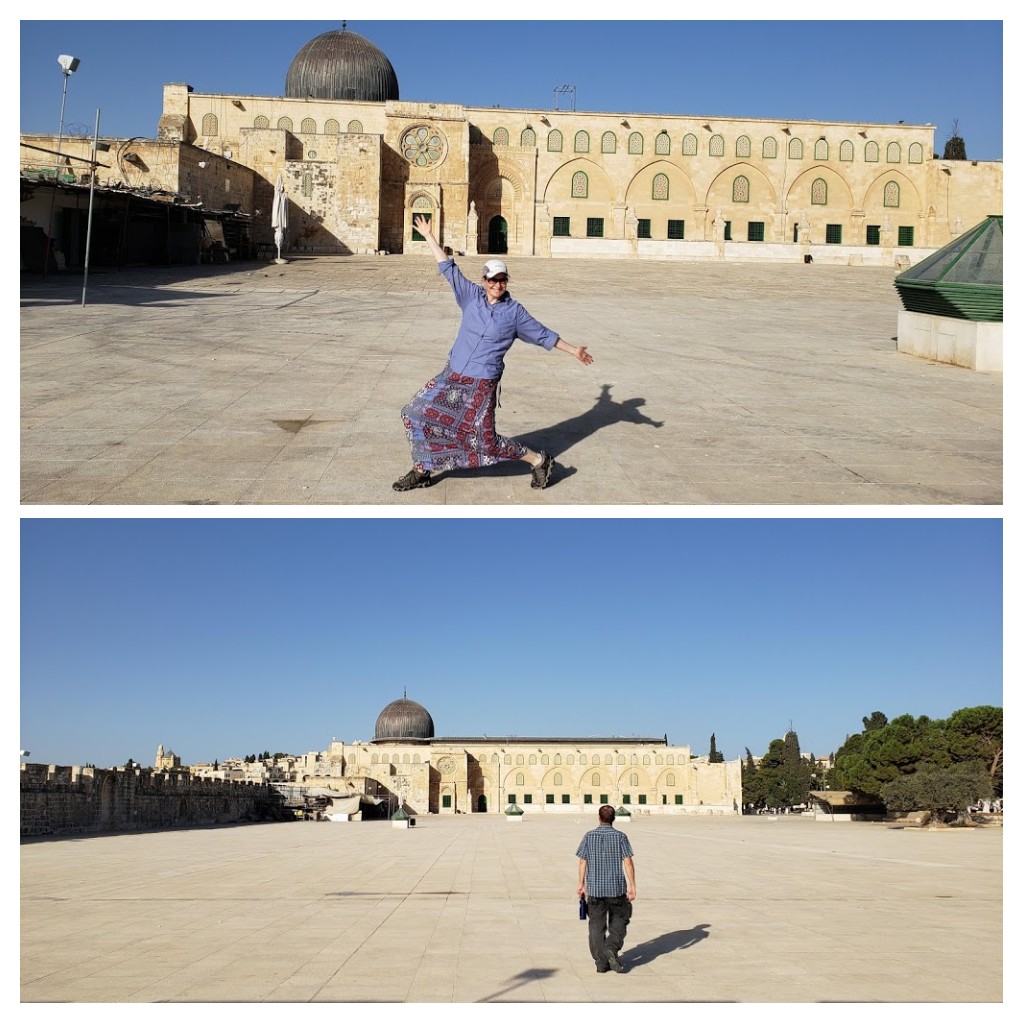
We went past the entrance of the mosque toward the South Eastern part of the Temple Mount. No-one was here! We enjoyed the large open space – views of the side of the mosque and also views through the Old City walls on the perimeter down to ancient city excavations and across to the Jewish burial tombs and cemetery on the Mount of Olives.
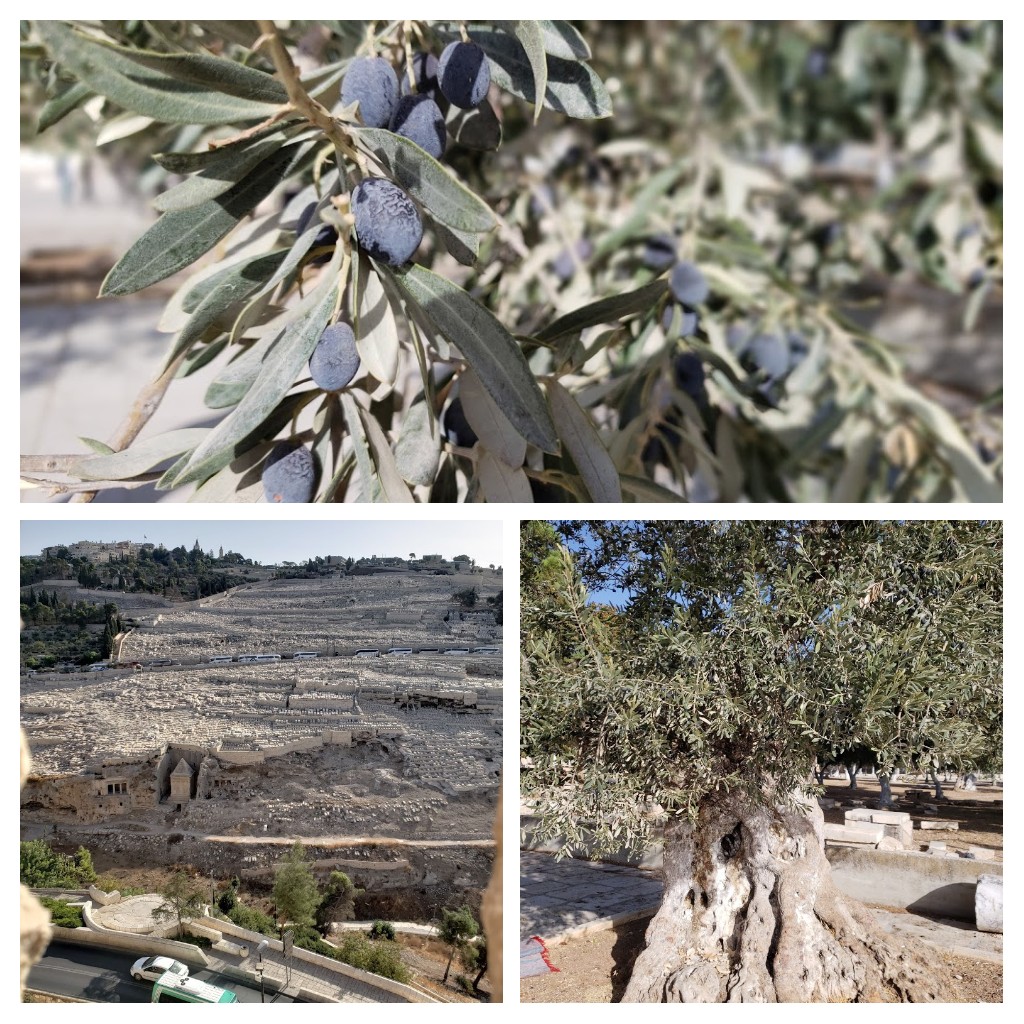
Next we headed to the Dome of the Rock to check it out from a few sides and take some photos. It was built in 691 CE by the Umayyad Caliph Abdal-Malik ibn Marwan. It was built on the highest point of the hill and above the rock at its centre to mark the site of Muhammad’s ascension to heaven (part of his famed ‘Night Journey’ involved an ascent to heaven). According to Jewish tradition this rock is the foundation stone on which the earth rests and many believe that the Second Temple (which was destroyed in 70CE) was located here.
The interior and exterior of the Dome were inlaid with rich glass mosaics. The outside was subsequently re-covered in ceramic tiles. The Gold on the Dome is a 20th century addition. According to wikipedia; ‘It is the earliest archaeologically-attested religious structure to be built by a Muslim ruler and the building’s inscriptions contain the earliest epigraphic proclamations of Islam and of the prophet Muhammad. The inscriptions proved to be a milestone, as afterward they became a common feature in Islamic structures and almost always mention Muhammad.’
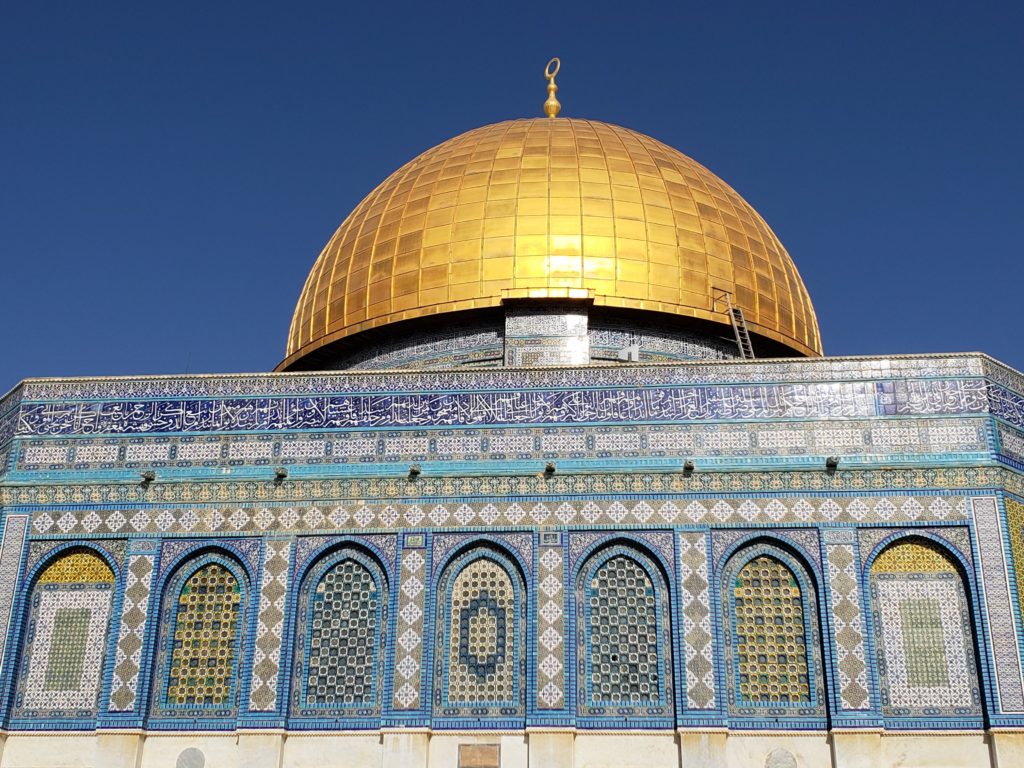
Although we weren’t able to go inside the shrine we had visited a museum the day before which had a virtual reality headset showing the inside. We could use the headset to look around the inside, up at the dome, down on the rock etc. Great idea for all the non-muslims who can’t go inside!
We headed over to the West side of the Temple Mount to have a look at the gates, minarets and other structures there, then explored the northern side. There are about 100 different structures to see on the Temple Mount from various time periods. These include prayer spots, arches, and fountains. I’ll let the photos do the talking from here…
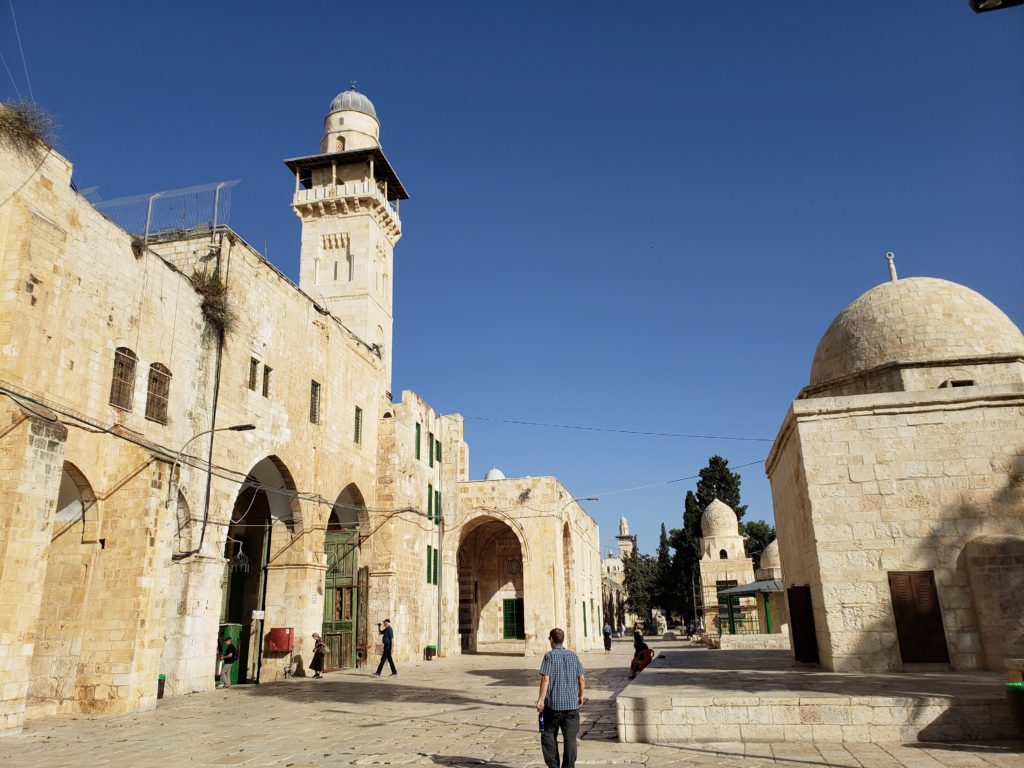
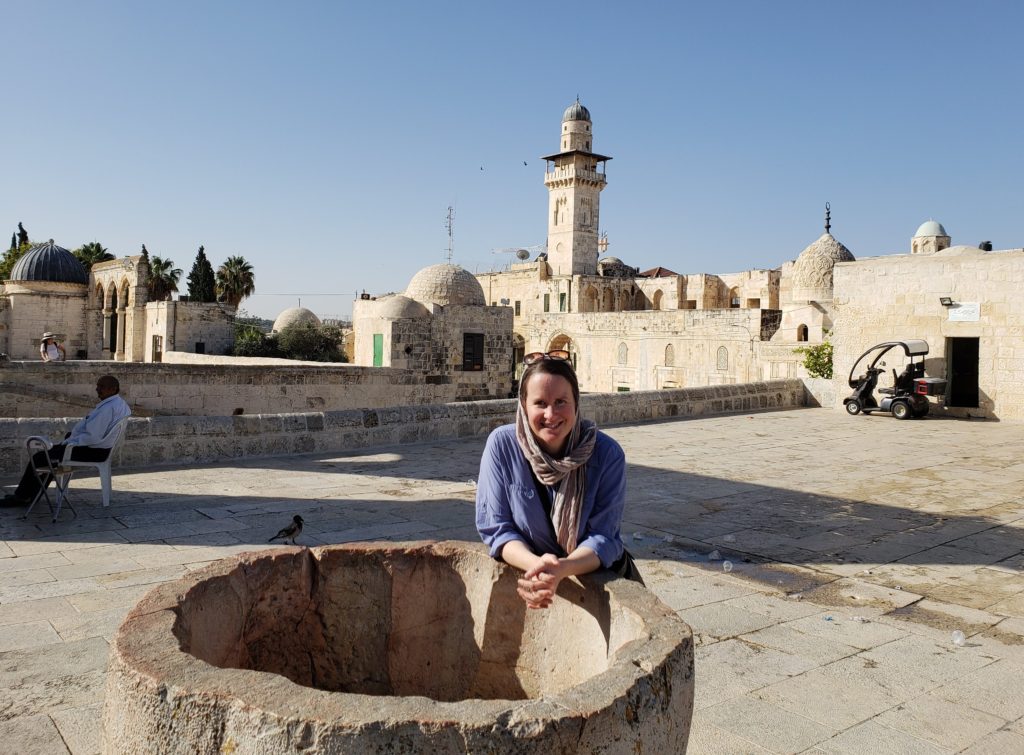
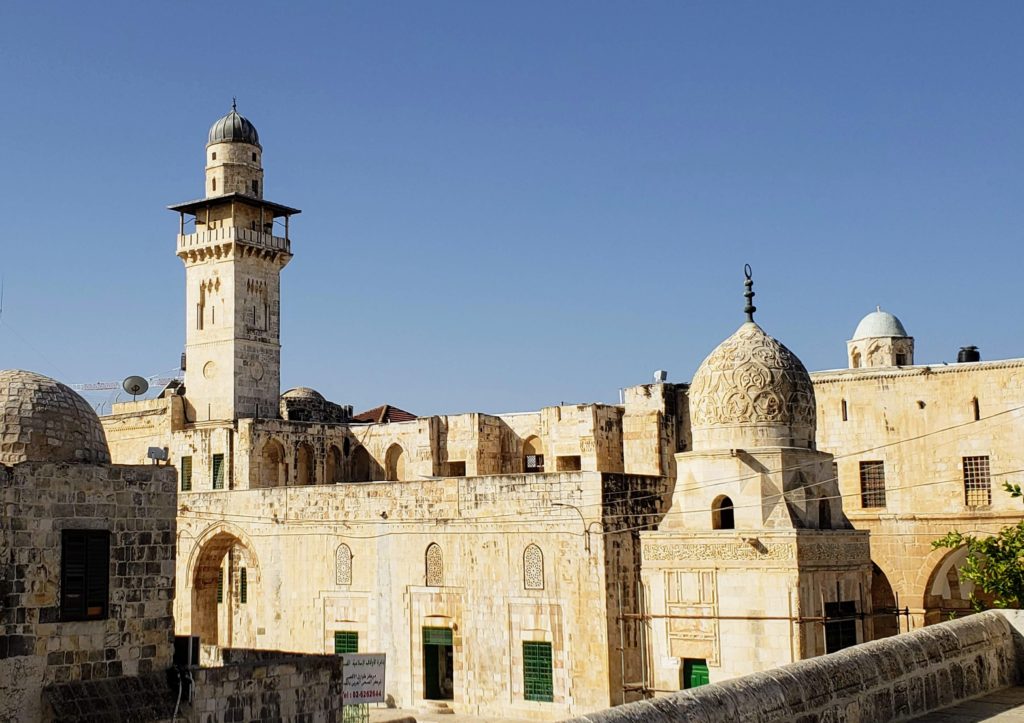
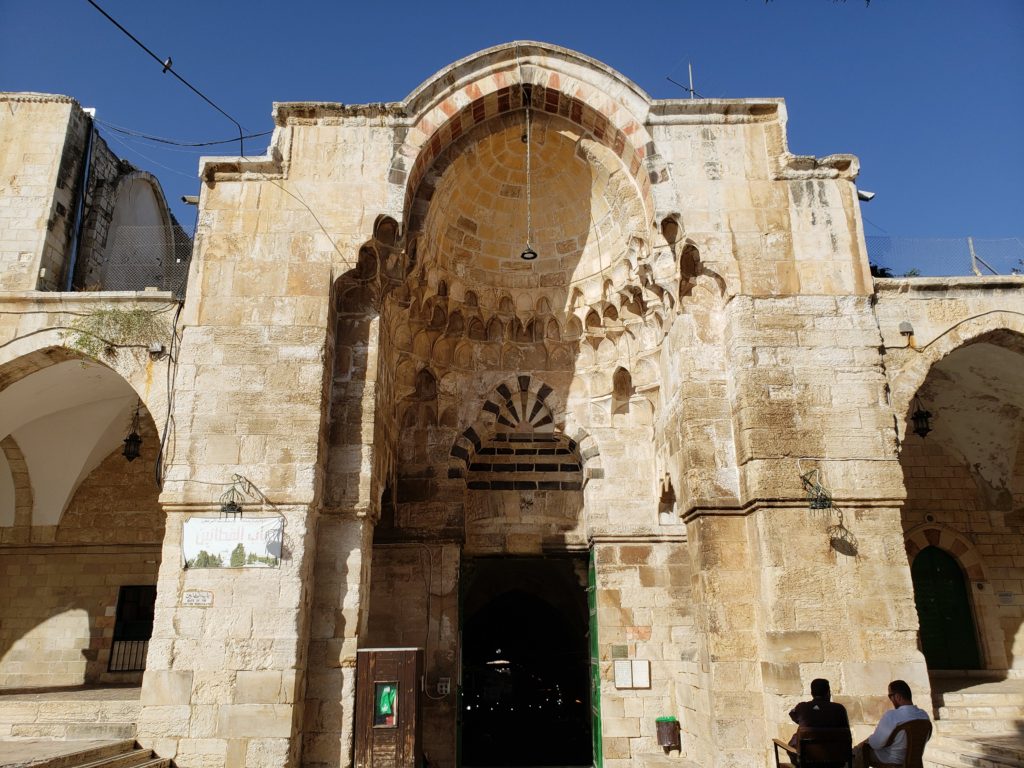
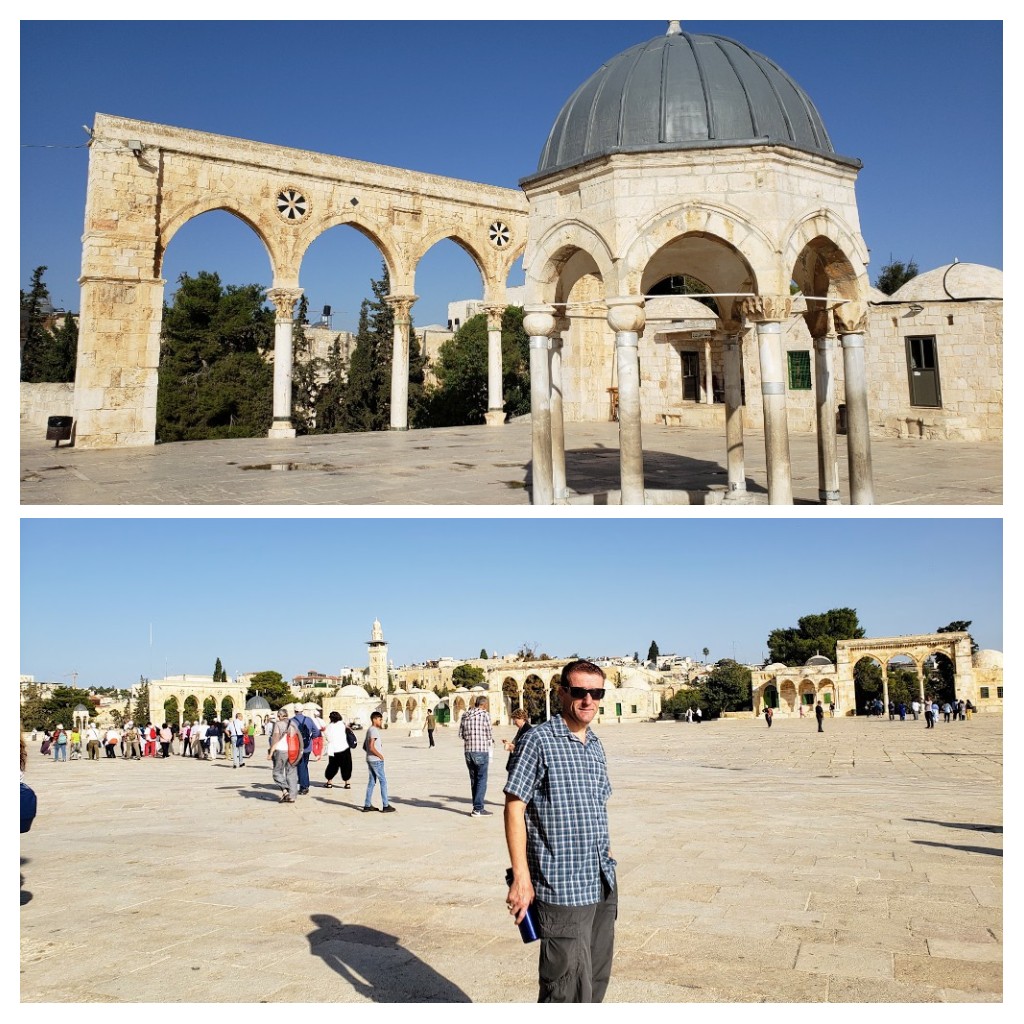
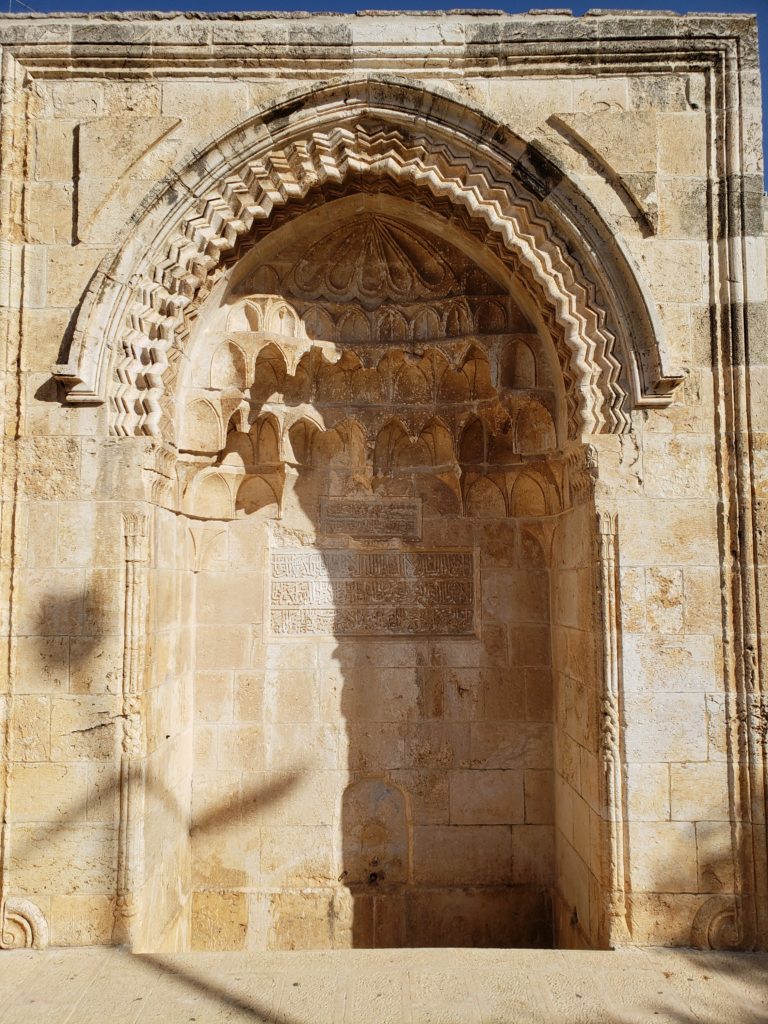
There are 11 gates around the Temple Mount that Muslim visitors can use freely and that tourists can use to exit. So we came in the gate on the south -western side (from the Jewish quarter) and exited through the Gate of Darkness (!) into the Muslim quarter. This gate is near the above fountain and not far from the school located in the northern wall. With all the doors open, we saw lots of students in their rooms as we walked past.
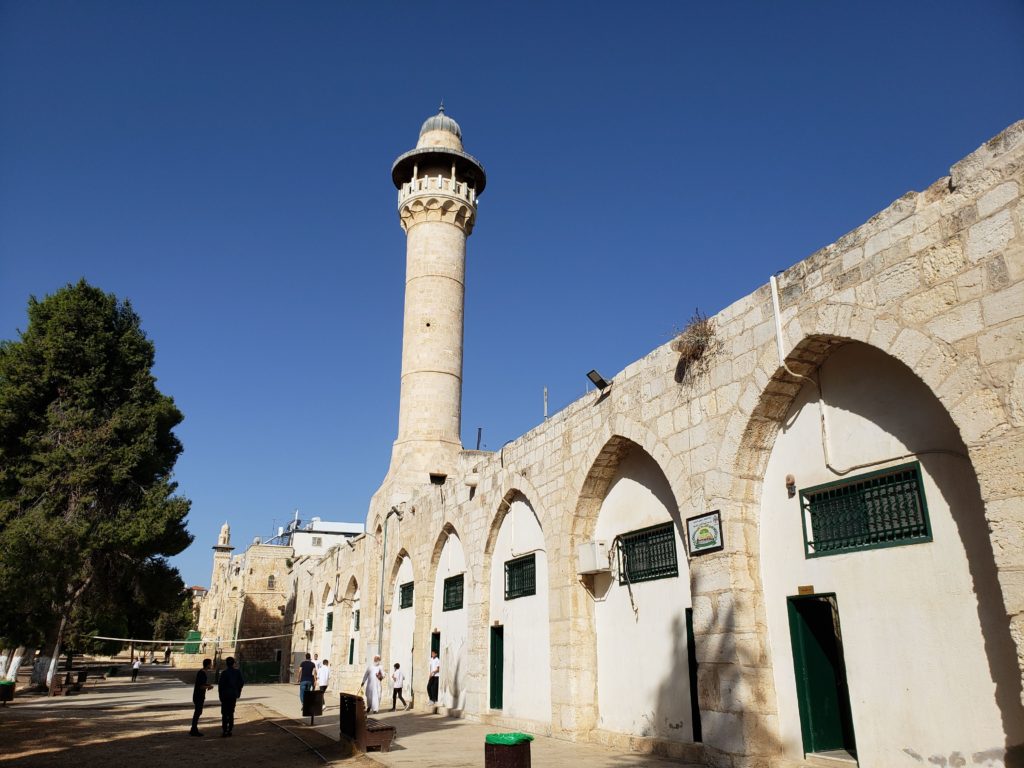
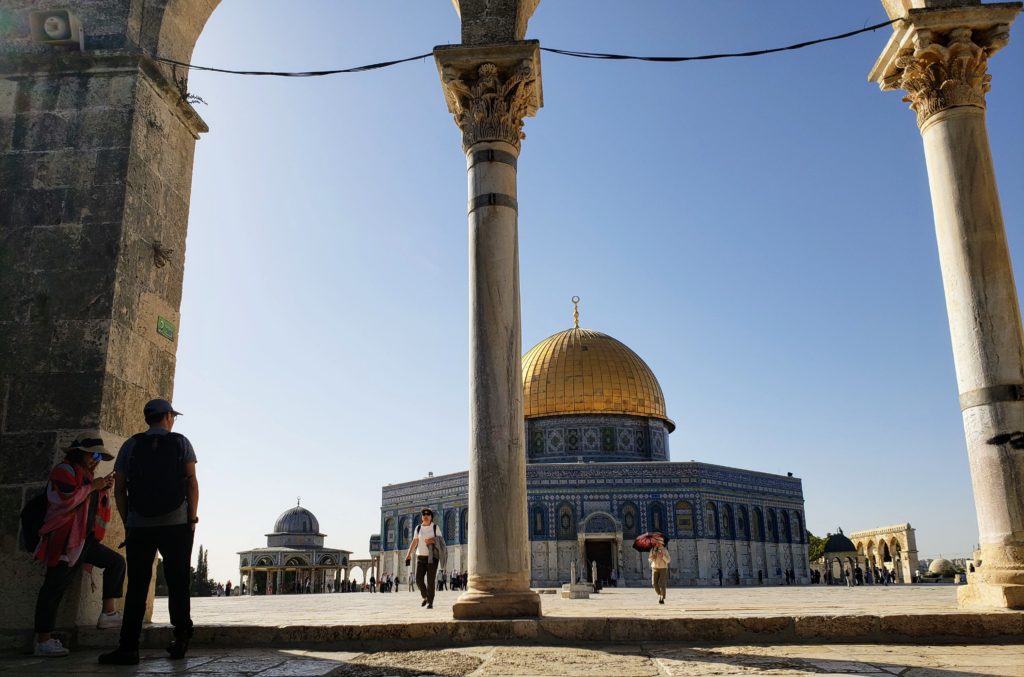
Temple Mount and the adjacent Muslim Quarter are the main Muslim parts of Jerusalem that tourists would see but exiting out of Damascus Gate that part of Jerusalem is decidedly Arab. Great for us was that on Shabbat Palestinian buses still came here and the restaurants were open. We found one particular place (Al Ayad Restaurant) that did hummus, salads and felafel cheaper than anywhere else (thanks trip advisor!). We visited 3 or maybe 4 times during our 3 week stay!
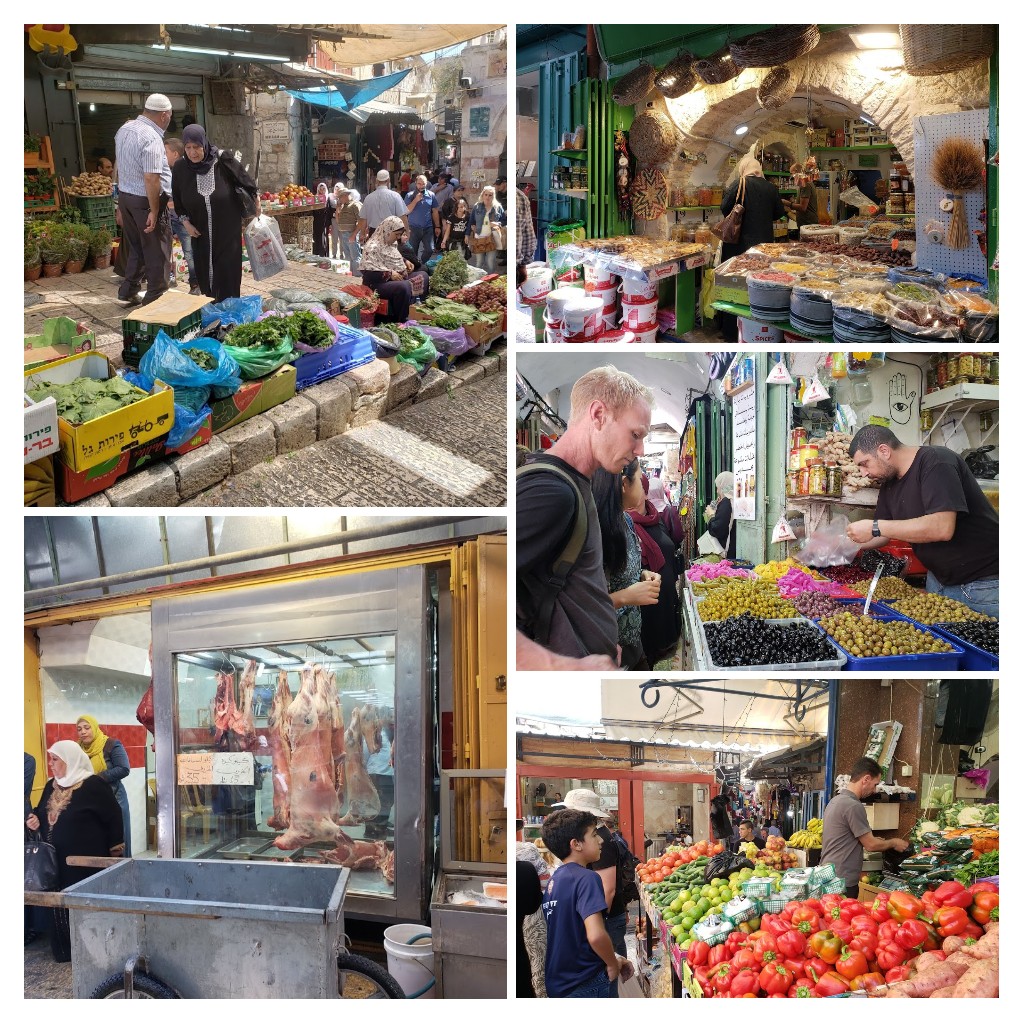
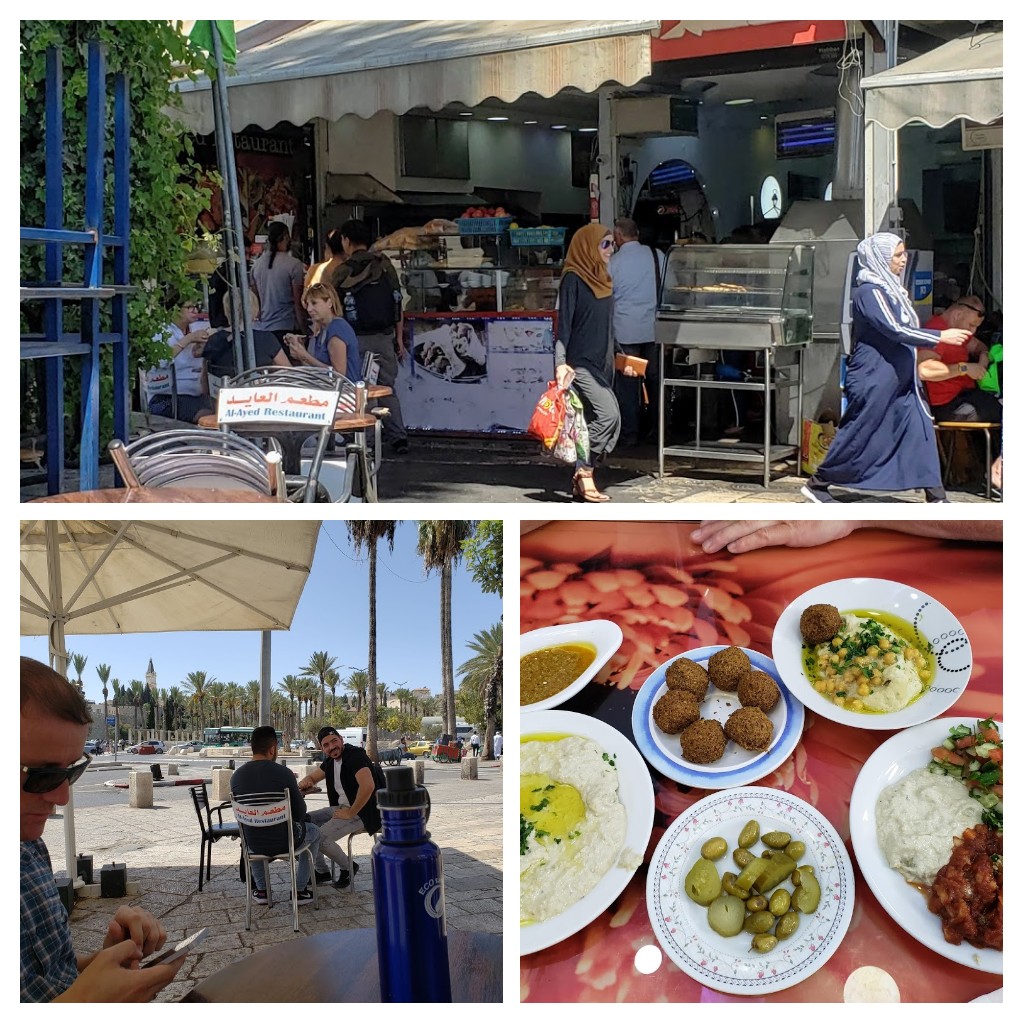
Not only is the Muslim presence in Jerusalem quite visible with many minarets puncturing the skyline but you can often hear the call to prayer over the loud speakers. We heard it from up on the Mount of Olives as the sun was setting and also an afternoon prayer call when on the roof of the Austrian Hospice in the heart of the Old City.
This concludes the religious themed posts about Jerusalem, having now written about Jewish Jerusalem, and Christian Jerusalem here and here. But there’s still much more to write about this fascinating city… so stay tuned for more!